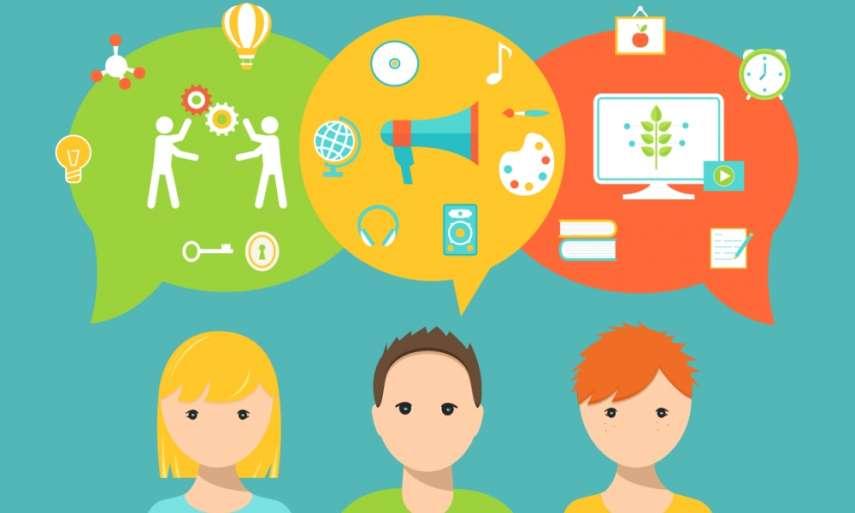
Different people process, integrate, and then access information in different ways. If you tell a story to ten people at the same time and then ask them to tell you about the story, each of them will recall different pieces of information based on what stood out the most to them
Some people learn best by listening, some have to see something done or read it for themselves, and others have to do it to learn it. Most everyone is strongest in one of these areas: visual, auditory, and kinesthetic.
Discovering how you learn best makes your learning efforts more effective, and knowing how to recognize other people’s learning styles can help you communicate with them more efficiently.
The Visual Learning Style
People with a visual learning style, myself included, prefer using images, pictures, colors, and maps to organize information. Visual learners love to make lists, take notes, draw out plans on a whiteboard, and color-code things. They tend to have a good sense of space and direction, making it easy for them to see where things fit.
Visual learners have an easier time integrating new information when they can see it, read it for themselves, watch the video, and see the maps and diagrams. When these things aren’t available, such as in a meeting or on a phone call, they tend to doodle or draw. The doodling activates those visual areas of the brain, creating associations that make the information from the phone call or meeting easier to remember.
You can identify visual learners by the way they talk about things. They may use phrases like:
- Let's look at it differently.
- See how this works for you.
- I can't quite picture it.
- How do you see it?
- I'd like to get a different perspective.
Learning happens when you can integrate new information in a way that you can recall it when you want to, and this happens when we create associations between things we already know, and the new information. For visual learners, take advantage of that wonderful imagery and picture the things you want to remember. For a bigger impact, add an emotional element to the association. Make it funny, or scary, or happy.
The Auditory Learning Style
Auditory learners prefer to hear things out loud. They retain more information from podcasts, lectures, and audio books. The radio is on while they study, and they may hum, whistle, or tap out a rhythm while trying to learn. Like all the learning styles, this activity helps activate that center of their brain and make stronger associations with the new material, helping them learn more effectively and efficiently.
Auditory learners may work well in collaborative groups and in-person forums where the spoken word is used to convey information and ideas. You can identify the auditory learners by phrases like:
- That sounds about right.
- That rings a bell.
- I hear you loud and clear.
- Tune in to what I'm saying
- That's music to my ears.
If you are an auditory learner, create memory associations by using sound, rhyme, and music. Try setting the information into a jingle or part of a song. And bonus points for adding in the emotional associations and making it funny or gross.
The Kinesthetic Learning Style
For Kinesthetic learners, it’s all about how things feel. People who have a strong kinesthetic style learn well by doing hands-on work, taking things apart, making models, and touching things. Like the other learning styles, kinesthetic learners process information more effectively when they activate that physical part of their brain. They may be very good at working through problems while they do something physical like running, exercising, gardening, or cooking.
Kinesthetic learners also tend to fidget more. They may find it hard to sit still, and the movement is actually helping them integrate and retain new information, in the same way that doodling does for visual learners, and humming or whistling does for auditory learners.
Kinesthetic learners use phrases like:
- That feels right to me.
- I can't get a grip on this.
- Stay in touch.
- Smooth things over
- That doesn't sit right with me.
- That was rough
When studying or learning new information, kinesthetic learners can form stronger associations by touching the things they are learning about, by creating images in their mind about the object including their texture, color, and how they feel. Also, keep in mind that writing and drawing diagrams are physical activities. Tapping fingers or feet, tensing and relaxing muscles, and using your hands will help create those connections in your mind, making the information easier to recall.◼
Karen Gray is a Certified Professional Hypnotist, a Certified Hypnosis Instructor, a Registered Nurse, and the Director of Green Mountain Hypnosis. For more information on how you can use hypnosis to change your life, contact Karen at karengray@greenmountainhypnosis.com, or (802) 566-0464.
Use this link to get a free 15 minute hypnosis audio for stress relief.
http://www.greenmountainhypnosis.com/StressFreeAudio.html